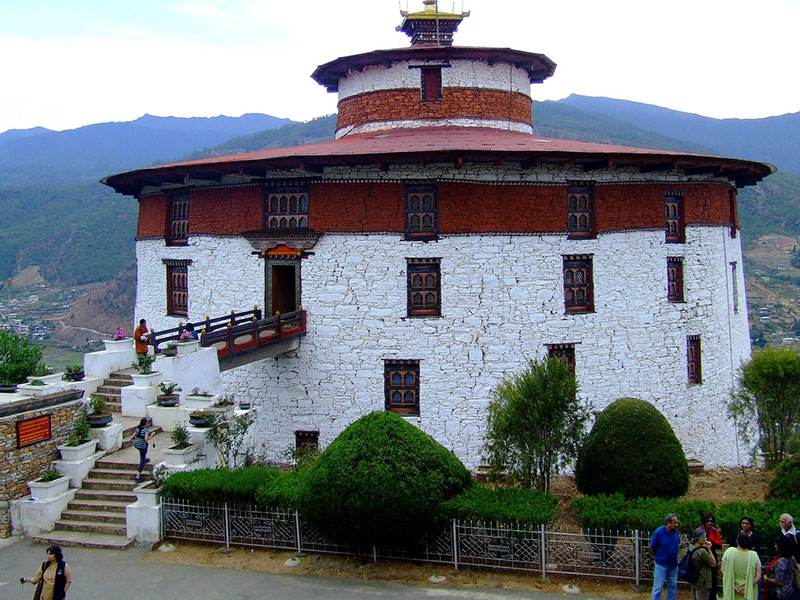
PARO WATCH TOWER
Paro Tadzong, also known as Ta Dzong, is a historic watchtower in Bhutan that has been transformed into the National Museum of Bhutan. It is perched above Rinpung Dzong in Paro and was originally built in 1649 to protect the dzong from invasions.
Key Features: Architecture: The structure is uniquely round, resembling a conch shell, and was built using stone and wood without nails.
Historical Significance: It survived major earthquakes in 1714 and 1896, showcasing its remarkable construction.
Museum Collection: The museum houses over 3,000 artifacts, including ancient Bhutanese art, royal relics, and cultural exhibits.
Underground Passage: A secret passage is believed to connect the tower to the Pa Chhu River, used for water supply during wartime.
Paro Tadzong is a must-visit for those interested in Bhutanese history and culture. Woul